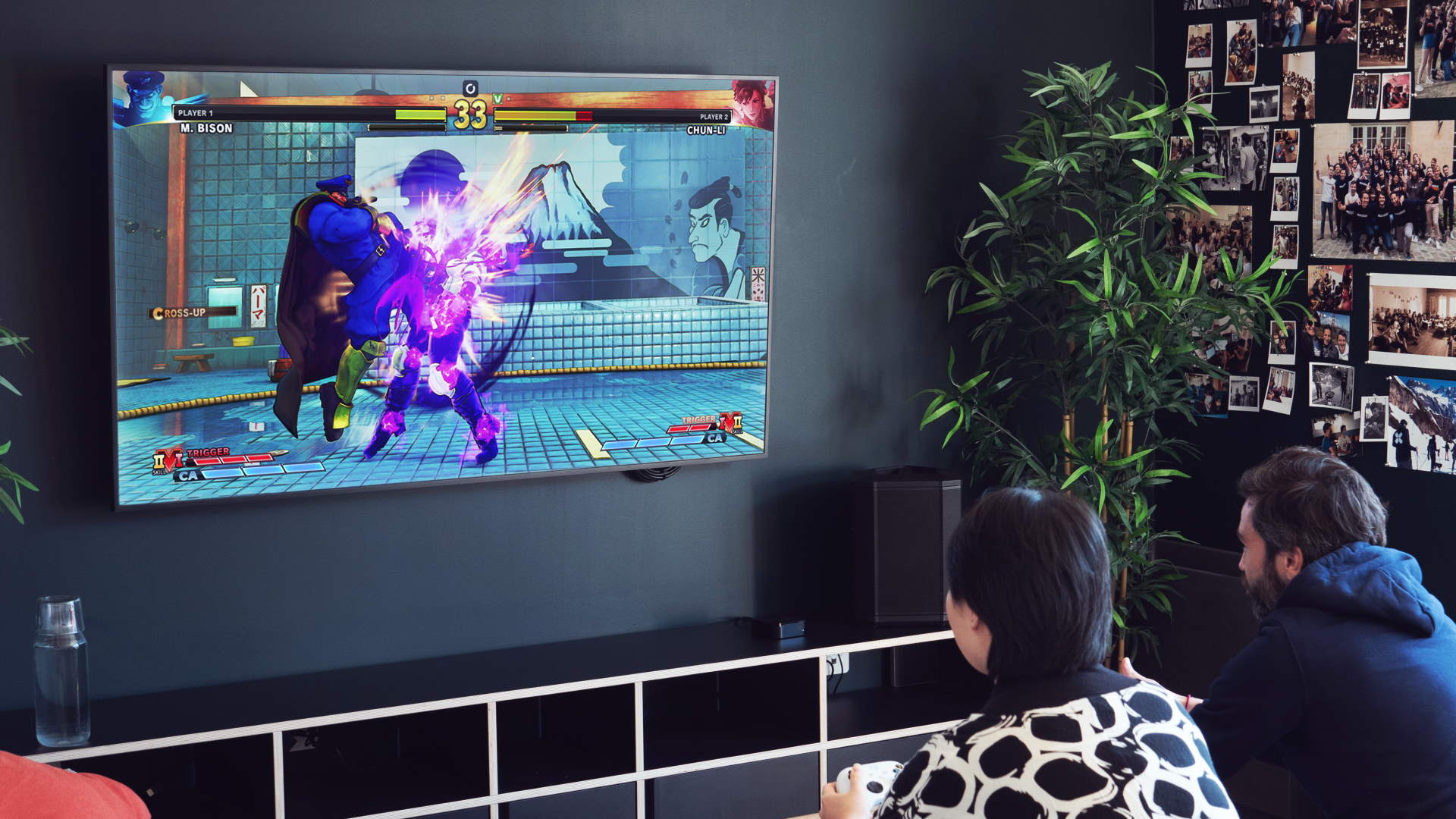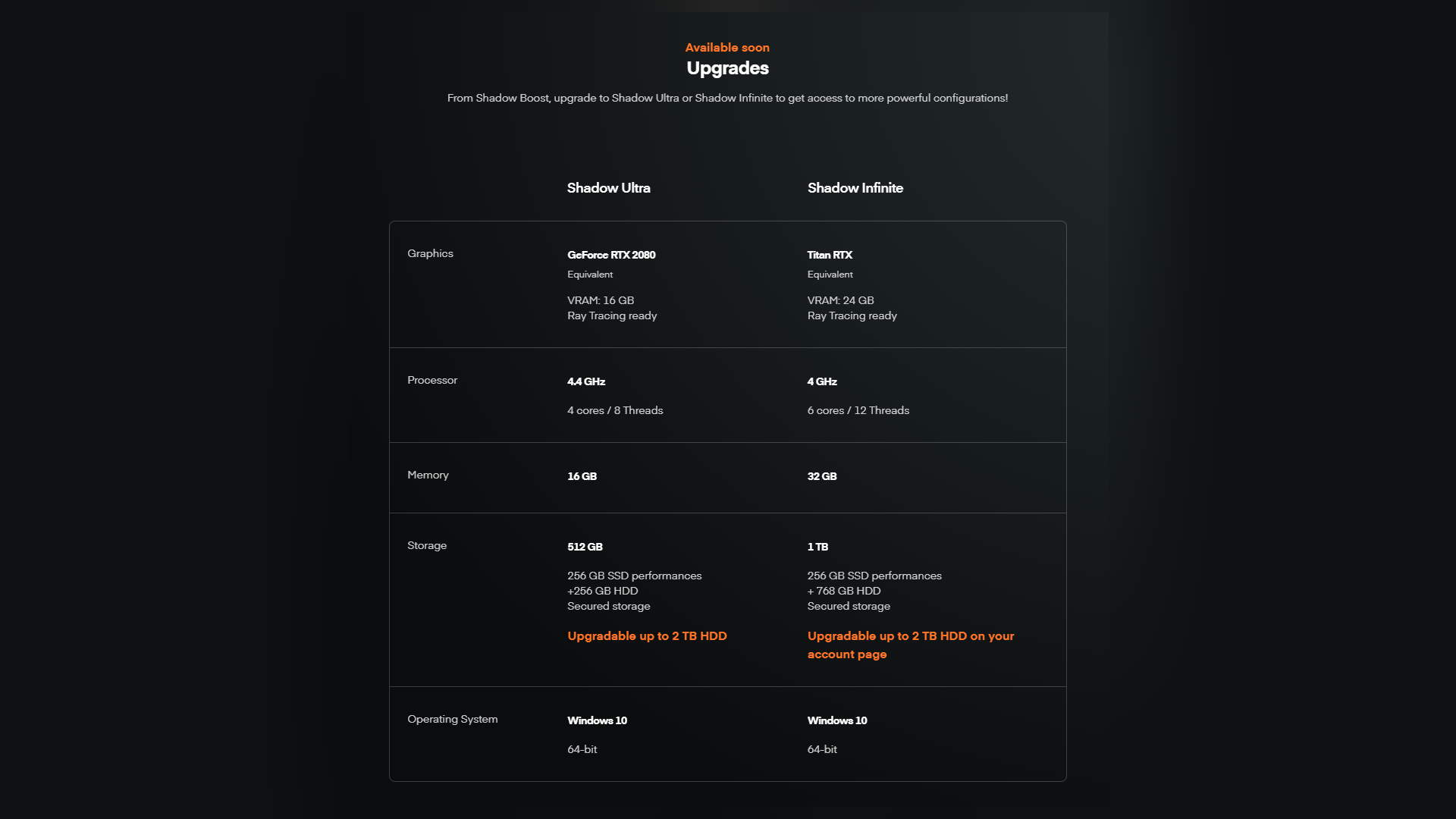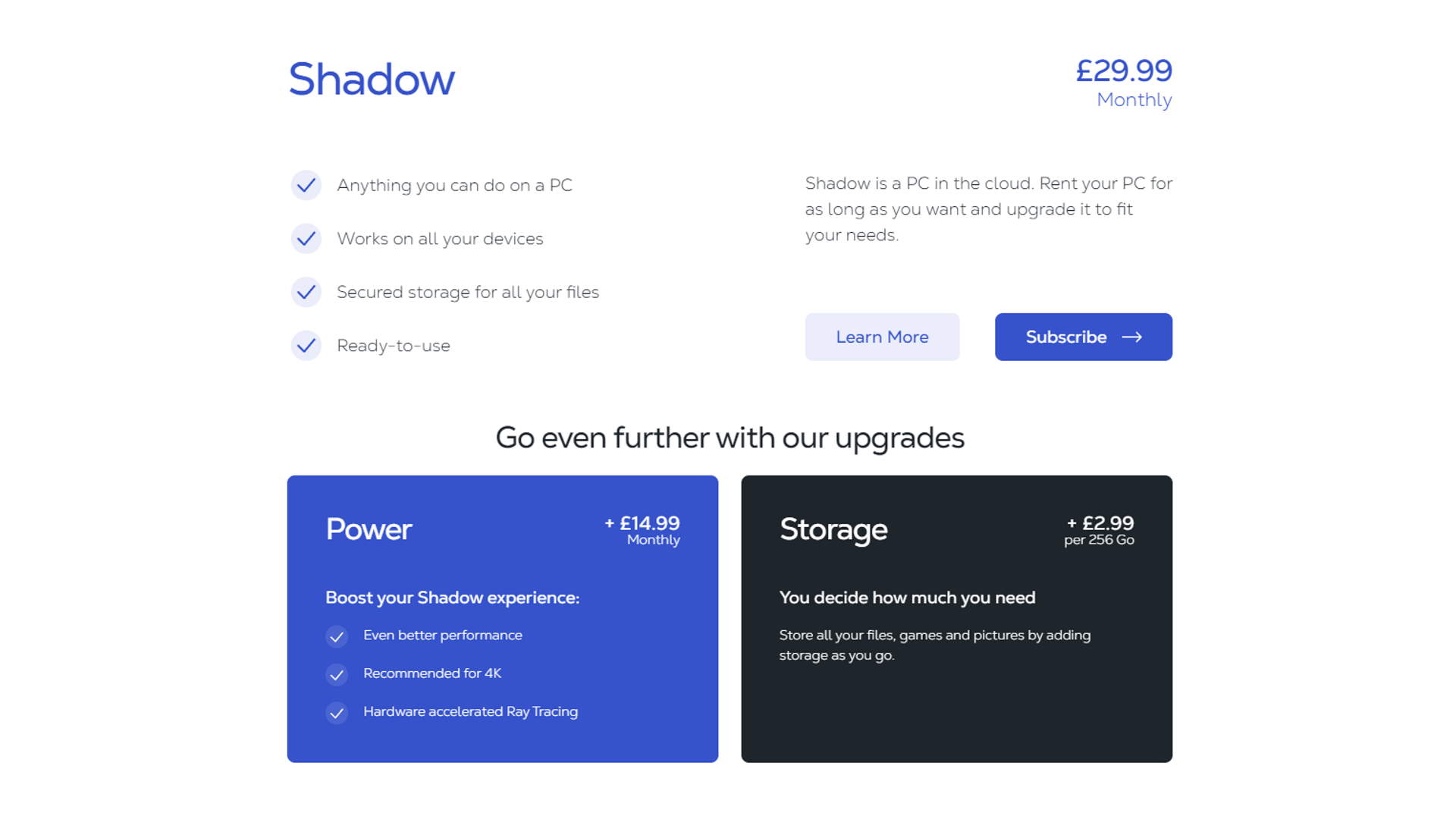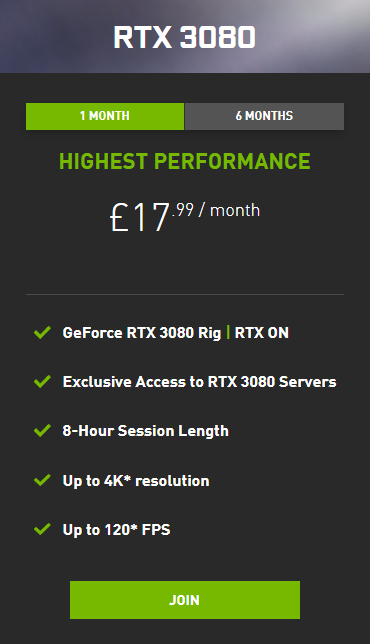After ambition and bankruptcy, the best PC streaming service has finally gotten its hardware upgrade
But the potentially prohibitive cost, and middle-tier hardware, may make it less of a viable alternative to your own gaming PC.

Shadow has finally taken the lid off a streaming service upgrade first promised way back in 2019. But that was before the company sadly filed for bankruptcy and was subsequently reborn. We are now getting an RTX 3070 level PC in the cloud, however, but it's been a long time coming. And I certainly have concerns, not necessarily for the staying power of the company under new ownership, but for the value proposition it's now offering.
Shadow has been one of my favourite streaming services since I first got my hands on the cloud gaming PC back in 2018, and regularly used it when I travelled—when travel was still a thing—so I only had to take a wee ultrabook with me and still effectively had access to a pretty high-powered gaming laptop.
It's unlike every other game streaming service, which essentially hide their systems from the end users and just give you the games to play. And then only the games it has licensed access to give you. Instead, Shadow is a whole persistent PC that's totally yours and lives purely in the cloud.
That means you can install whatever you want on it, run whatever you want on it, and access it from wherever you want.
It's an impressively powerful service, only really let down by the four Xeon cores the GPU was attached to, which did hold gaming performance back.
At least it was impressively powerful four years ago, when a GTX 1080-powered gaming rig was up there with the best systems around. One of the founding promises of Shadow as a long-term service, and the thing that made its high subscription price acceptable in the face of spending out on a local machine, was around future upgrades.
The idea ran that you'd pay your £27/month sub and you'd end up paying the equivalent price of a full-price gaming PC in three years. But within that three year time you could expect Shadow to upgrade the hardware in its servers and you'd keep paying the same amount of cash and have higher performance.
The biggest gaming news, reviews and hardware deals
Keep up to date with the most important stories and the best deals, as picked by the PC Gamer team.
Shadow could offset that by offering a lower-cost tier using the old hardware to a new audience.

And that seemed to be confirmed when, in the face of Stadia launching it picked up a €30 million cash injection in 2019, promising that it would be launching two new higher tiers of package in February 2020. The original GTX 1080 equivalent tier was getting discounted to £13/month, with the middle RTX 2080 equivalent and RTX Titan packages costing £25 and £50 respectively.
But 2020 was rough for everyone, and the new packages were repeatedly delayed until in 2021 the company filed for bankruptcy.
A change of ownership has occurred, and new people, as well as a significant number of original employees, make up its workforce. And they're all now pushing forward to get Shadow back to the top of the streaming service tech tree.

The new Power Upgrade package offers RTX 3070-class GPU performance, though in certain, as yet undisclosed locations that will actually come from AMD RDNA 2 powered hardware, the Radeon Pro V620. It also features a shift to AMD CPU cores, too, with an EPYC 7543P doing the processing for your four-core, eight-thread equivalent. You also get some extra memory, with 16GB of RAM.
It looks like you still only get the same 256GB of storage, however, so you'd have to pay out another £2.99 per extra 256GB you might want.
So the costs mount up, because the Power Upgrade is going to cost £15 extra on top of the base £30/month figure. And yes, that £30/month subscription still only gets you access to the GTX 1080-equivalent system, which means you'll need to fork out £45/month for your RTX 3070 cloud PC. Which is still slightly hobbled by being connected to only four cores, and only has 256GB of storage, and will be last-generation hardware when it launches as Nvidia's RTX 40-series will likely have been released by then.
I will say, for me, that storage level wasn't a huge issue. With the 1Gbps connection at the Shadow end you could install a new game sucking down 1GB of game data in like 13 seconds, so Steam library management wasn't the pain it might otherwise have been.
But it still feels miserly given the promised specs of the 'Infinite' package it once promised. That RTX Titan-powered system was to have a six-core CPU equivalent, 32GB RAM, and 1TB of storage for £40/month.

Shadow tells me that costs for everything have gone up significantly, and maintaining those servers certainly isn't cheap. But still, Power Upgrade aside, the GTX 1080 tier costing £30/month in 2022 certainly feels tough to swallow four years on. Especially when it was £12/month, what Shadow is now calling a ridiculous price, a couple of years back.
For less than half the price of the Power Upgrade you can have GeForce Now's top package, which has you gaming with all the power of an RTX 3080. It may be more limited in terms of access and overall usage, but as a game streaming service it's a great-value alternative that makes Shadow a tough recommendation.
Honestly, I'm almost more excited about the free Shadow Drive online storage solution it's also launching in the autumn, with an easy 20GB of space gratis.
I have no doubt that the Power Upgrade will feel great, and the actual experience of using the Shadow PC was always excellent, even on the limited bandwidth of random AirBnB Wi-Fi networks when on vacation. Like I said, I've always been a fan of the service itself. But at this price, and with less certainty on future upgrade possibilities, it's harder to call out as a valid alternative to buying your own local machine.
Pre-orders for the Power Upgrade go live in the summer with an expected release globally in the autumn, so we'll see how popular that is, and how effective the GPU upgrade actually feels when still tied to a quad-core processor, when we get our hands on an ephemeral Shadow PC to test again ourselves.

Dave has been gaming since the days of Zaxxon and Lady Bug on the Colecovision, and code books for the Commodore Vic 20 (Death Race 2000!). He built his first gaming PC at the tender age of 16, and finally finished bug-fixing the Cyrix-based system around a year later. When he dropped it out of the window. He first started writing for Official PlayStation Magazine and Xbox World many decades ago, then moved onto PC Format full-time, then PC Gamer, TechRadar, and T3 among others. Now he's back, writing about the nightmarish graphics card market, CPUs with more cores than sense, gaming laptops hotter than the sun, and SSDs more capacious than a Cybertruck.

